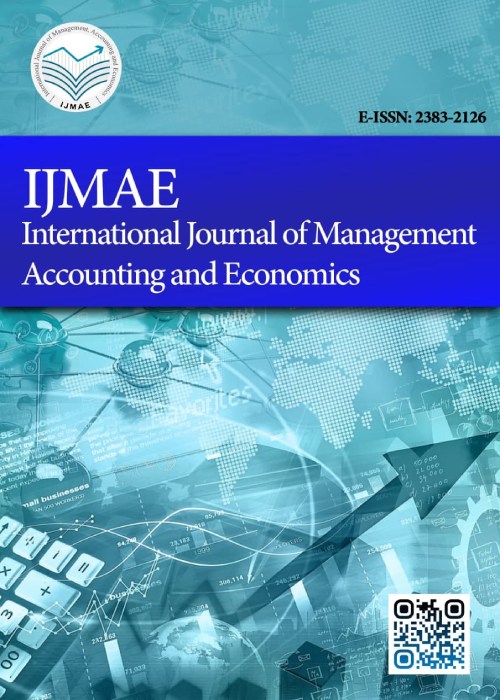فهرست مطالب
International Journal of Management, Accounting and Economics
Volume:7 Issue: 4, Apr 2020
- تاریخ انتشار: 1399/02/23
- تعداد عناوین: 4
-
Pages 123-146
The current research aims to discover the impact of entrepreneurship education on entrepreneurial intentions of undergraduate students. This is achieved through individual factors (attitude towards behavior, entrepreneurial motivation, entrepreneurial resource and perceived behavioral control) and entrepreneurship education. A quantitative survey design was used to collect information from a study sample of 255 undergraduate agriculture science students from the College of Agriculture Education, Mampong - University of Education, Winneba, Ghana. Results indicated that individual factors and entrepreneurship education have a direct positive influence on entrepreneurial intentions. Also, entrepreneurship education moderates the influence of individual factors on entrepreneurial intentions among undergraduate students. In conclusion, using agriculture science students, entrepreneurship education plays a major role in equipping and enhancing students with entrepreneurial knowledge and developing entrepreneurial interest among undergraduate students. The practical implications and future scope are discussed as well.
Keywords: Entrepreneurship Education, Entrepreneurship, EntrepreneurialIntention -
Pages 147-163
Fiscal policy plays a key role in the economic growth of every country. In this article, we investigate the impact of fiscal policy on economic growth in case of Pakistan by using time series data from 1981-2016. For analysis, we built a model of gross national expenditure and applied autoregressive distributed lag model for empirical analysis this study on the base of bound test value. The result indicates that gross national expenditure had a positive relationship with the growth rate. Moreover, industry value added had a positive and significant relation with growth rate because since countries with reliable industrial sector results in more development and growth.
Keywords: Fiscal policy, Economic Growth Rate, Error Correction Model, Pakistan -
Pages 164-176
Boundary systems and diagnostic controls are two levers used to control the achievement of performance targets. We use these levers to analyze how Collection Department of PJ Property achieves the performance targets. PJ Property’s revenue relies to rent revenue. The firm faces difficulty to collect rent revenue from tenants. The collection of rent revenue has decreased in period 2018. This research is a qualitative research with case study method. The case study we used in this study is on Collection Department. Collection Department is underperformed in 2018. The results showed that the underperformance of Collection Department is caused by first; there are no consequences for performing or underperforming of in achieving department’s performance targets. Second, boundary systems are weakly implemented. Third, the diagnostic controls are also poorly implemented.
Keywords: Boundary System, Diagnostic Control, Performance Targets -
Pages 173-188
The healthcare industry in developing nations has chronicled high development rate in our current dispensation. This study sought to identify the most critical factors in hospitals related service delivery quality that will drive loyalty and hence ensure the survival and success of the hospital in the future; it ideally tested if the satisfaction of a patient had any role to play in such relationship. This study was conducted using data from (562) patients who received services from (4) four major but different private hospitals in Ghana. The five Service Quality dimensions; Tangibility, reliability, responsiveness, assurance and empathy, patient satisfaction and loyalty to the hospital were the variables well-thought-out for this study. A path analysis was done utilizing SmartPLS V3.2.8; a second-generation multivariate data analysis method (PLSSEM) in order to compute path coefficients, direct and indirect effects of the variables on patient's satisfaction and also loyalty to the hospital. The study prompted that empathy, responsiveness and tangibility (not assurance and reliability) impact patients’ satisfaction and patient's satisfaction is directly related to patients’ loyalty to the hospital/clinic.
Keywords: Private Health, Clinic, Service Quality, Patient Loyalty, Satisfaction, PLS-SEM


